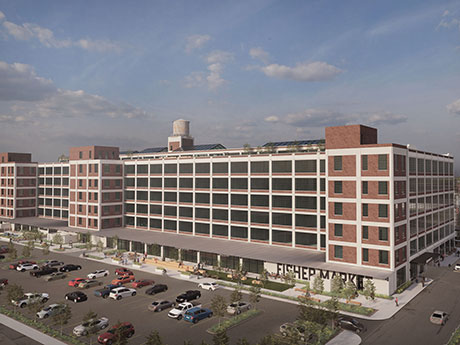NEW YORK — The COVID-19 pandemic left many offices and commercial districts vacant, as employees worked from their homes and left cities to seek housing in more suburban areas. Simultaneously, hundreds of U.S. cities have been unable to meet housing demands for both homes to buy and homes to rent. Developers are eyeing adaptive reuse projects to address both issues.
Adaptive reuse means repurposing an existing structure for a new use. Commercial-to-residential conversions are a form of adaptive reuse whereby office developments, retail spaces and hotel properties are converted into multifamily communities.
Office conversions are the most common form of commercial-to-residential transformation. Forty-one percent of all rental apartment conversions in 2020 and 2021 involved former office buildings. Former factories and hotels are also common structures to be converted, according to RentCafe, a Yardi Systems apartment listing and management service, which also conducts research and publishes reports on local, state and national level multifamily dynamics.
In 2020, developers completed 11,800 commercial -to-residential conversions — more than double the 5,271 units completed in 2010.The number nearly doubled again in 2021, when an approximate 20,122 units were slated for completion before the end of the year. The National Apartment Association (NAA) expects nearly 53,000 apartments to be converted by the end of 2022.
As of October 2021, Philadelphia had the most adaptive reuse apartments in the United States, with 1,863 total units converted since 2020, according to Yardi Matrix data. Washington, D.C. followed close behind, with 1,762 units converted.
Cleveland, Chicago and Los Angeles each saw just over 1,000 adaptive reuse conversions since 2020. The rest of the top 10 included Alexandria, Virginia (955 units converted); Detroit (874 units); Pittsburgh (814 units); Kansas City, Missouri (666 units); and New York (614 units).
With a population of over 8.8 million people and few available rental apartments, demand for housing in New York City is high, far surpassing pre-pandemic conditions.
The New York City Department of City Planning established its Office Adaptive Reuse Task Force in July of this year. The task force includes 12 experts appointed by Mayor Eric Adams, City Council Speaker Adrienne Eadie Adams and Public Advocate Jumaane Williams. New York City Planning Director Dan Garodnick serves as the chair of the task force.
According to the department’s website, the purpose of this task force is to recommend legal and regulatory changes to support the conversion of obsolete office buildings into residential and educational spaces.
The Office Adaptive Reuse Task Force expects to publish its recommendations for adaptive reuse in New York City on the Department of City Planning website before the end of this year.
New York is one of a few cities on RentCafe’s top 10 list that is currently researching adaptive reuse as a solution to both empty commercial districts and housing shortages. Chicago, Los Angeles, Denver and Washington, D.C., are all reviewing budgets, regulations and tax credits regarding adaptive reuse and commercial-to-residential projects.
The Real Estate Board of New York has reported that converting 10 percent of Class B and C offices could net roughly 14,000 units. The RAND Corporation, a nonprofit global policy research organization based in Santa Monica, California, has identified approximately 2,300 commercial properties in Los Angeles that could be converted into as many as 113,000 housing units.
— Channing Hamilton


